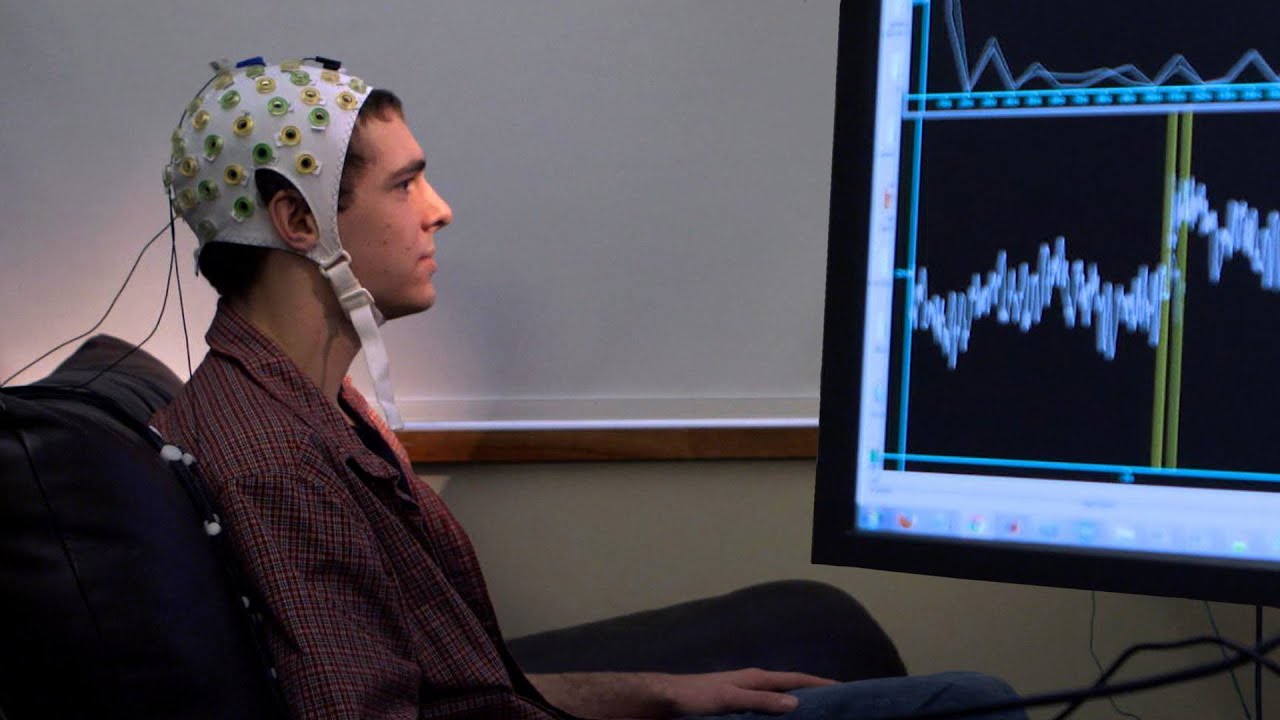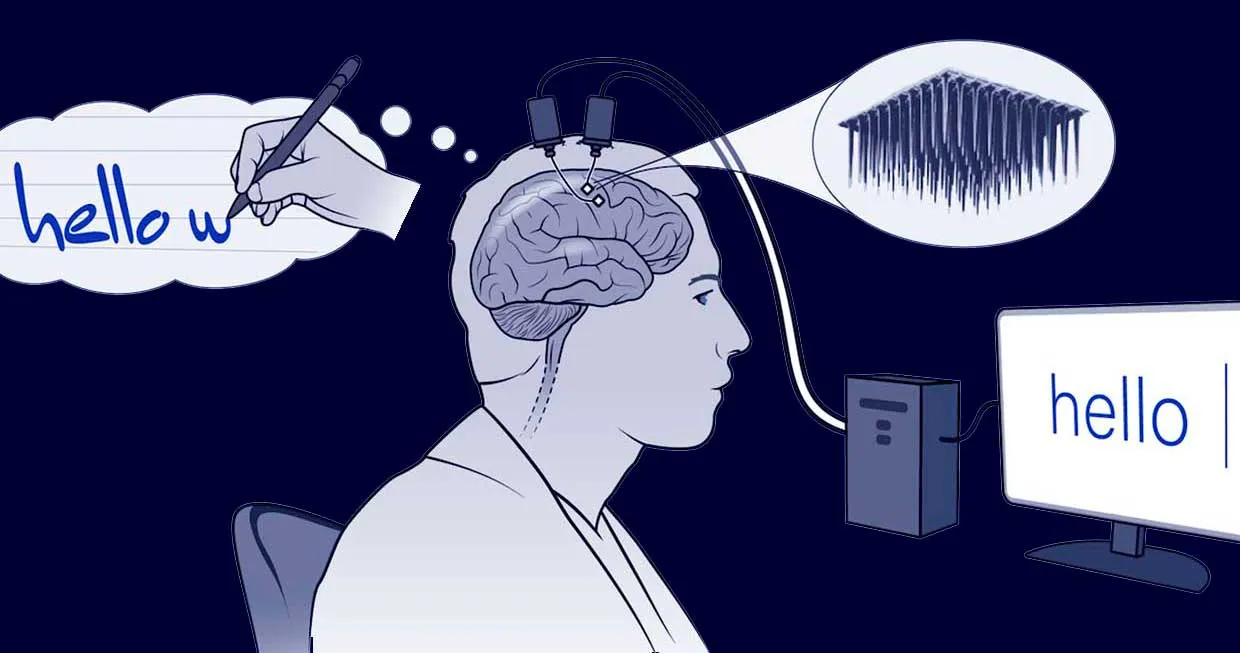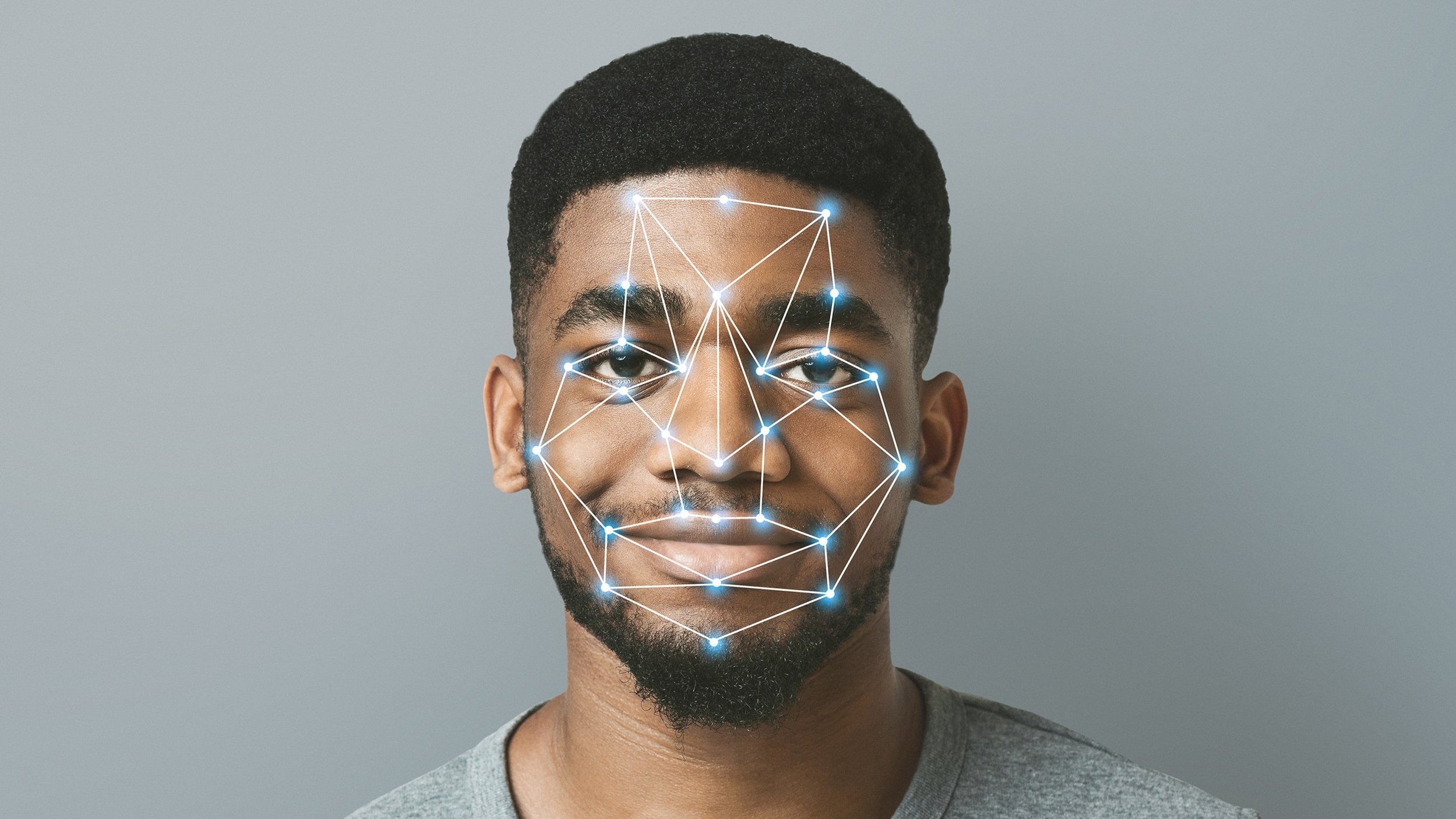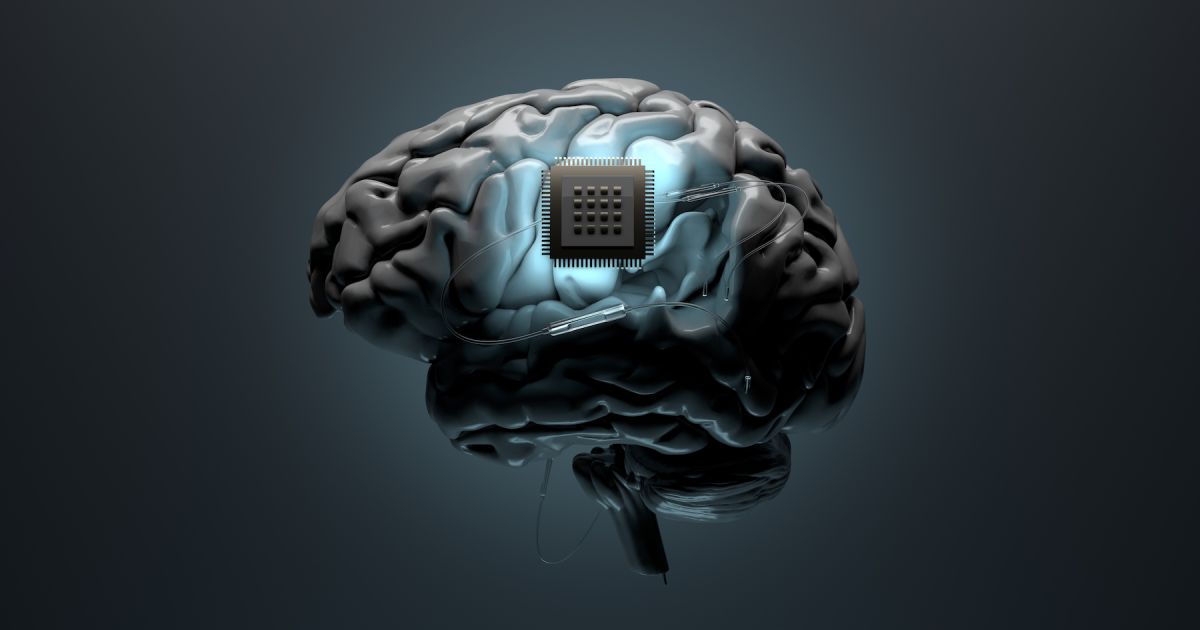Brain Computer Interface (BCI) - The Future Of Human-Computer Interaction
In this article, we will delve into the world of brain computer interface, exploring their history, current applications, challenges, and the potential they hold for the future.
Author:Suleman ShahReviewer:Han JuJun 07, 2023528 Shares131.9K Views

In the ever-evolving landscape of technology, one concept stands out as a game-changer in the way we interact with computers and machines: Brain-Computer Interface(BCI). This revolutionary technology bridges the gap between the human brain and computer systems, allowing direct communication and control without the need for traditional input devices like keyboards or mice. In this article, we will delve into the world of brain computer interface, exploring their history, current applications, challenges, and the potential they hold for the future.
The Evolution Of Brain-Computer Interface
Early Beginnings
The origins of brain-computer interface can be traced back to the 1970s when the first rudimentary experiments were conducted to record brain signals. Researchers used electroencephalography (EEG) to capture brainwave patterns, laying the foundation for future developments in the field.
Milestones In BCI Development
Over the years, BCI research achieved significant milestones. In the 1990s, the first successful brain-actuated communication system was demonstrated, allowing users to control a computer cursor using their brain signals. This breakthrough opened new avenues for exploration and sparked interest in the medical and technological communities alike.
How Brain-Computer Interfaces Work
EEG-Based BCIs
Brain-computer interfacesoperate by detecting and translating electrical brain activity into machine-readable commands. Electroencephalography (EEG) is a common method used to record brain signals. Electrodes are placed on the scalp, and the resulting EEG data is processed to identify specific patterns associated with different mental states or intentions.
Invasive BCIs
Invasive BCIs involve implanting electrodes directly into the brain. Although more challenging and risky, invasive BCIs offer higher precision and data quality. These systems are primarily used in medical applications, such as restoring communication and mobility for individuals with severe physical disabilities.
Non-Invasive BCIs
Non-invasive BCIs, on the other hand, rely on external sensors to detect brain activity without the need for surgical procedures. While they may have lower accuracy compared to invasive methods, they are safer and more practical for everyday use.
Why It's Important
Through brain-computer interfaces, users can operate devices by thinking about them. These interfaces can benefit those with disabilities and improve connections between humans and computers.
On the battlefield, for instance, soldiers may fly drones without using their hands. Although the technology is still primarily experimental, it creates issues with equity, security, and morality.
What Is The Process Of Brain-Computer Interfaces?
All brain-computer interfaces are based on the electrophysiology of a brain's neural network, despite the fact that they differ in nature and technique.
Electrical and chemical signals are sent when we make a decision or even just consider making one. This event occurs in the synapses—the spaces between neurons where communication takes place—within our nervous system.
BCIs install electrodes close to these conversations to record the brain activity involved in these conversations. These sensors pick up voltages, counting each "spike" as it occurs or might occur and evaluating its frequency and strength.
Current Applications Of Brain-Computer Interfaces
Assistive Technology
One of the most promising applications of BCIs is in assistive technology. Individuals with disabilities, such as paralysis or locked-in syndrome, can use BCIs to control prosthetic limbs, robotic devices, or even communicate through speech synthesis systems. This technology has significantly improved the quality of lifefor many people worldwide.
Gaming And Entertainment
BCIs have made their way into the gaming and entertainment industry. Gamers can experience a more immersive gaming environment by using their brain activity to control characters or objects in virtual worlds. Additionally, brain-controlled music players and art applications offer novel and creative experiences.
Brain-Computer Interface And Medicine
In the medical field, BCIs hold great promise for various applications. Brain-controlled neurofeedback systems are being explored to aid in treating conditions like epilepsy, attention deficit disorders, and anxiety. Researchers are also investigating BCIs for potential applications in stroke rehabilitation and enhancing brain plasticity.
Challenges And Limitations Of BCIs
Despite the significant progress, brain-computer interfaces still face several challenges:
Signal Accuracy And Reliability
BCIs must consistently and accurately interpret brain signals to perform intended actions. Noise, environmental factors, and individual variability can hinder the reliability of these systems.
Training And Adaptation
Users need to undergo extensive training to learn how to control BCIs effectively. Moreover, the user's brain signals may change over time, requiring re-calibration and adaptation of the BCI system.
Ethical And Privacy Concerns
As BCIs become more sophisticated, ethical concerns about privacy, data security, and potential misuse of brain data emerge. Ensuring user consent and data protection are critical considerations in BCI research and development.
The Future Of Brain-Computer Interface
Despite the challenges, the future of BCIs appears promising. Ongoing research and advancements in machine learning and neuroscience hold the key to overcoming existing limitations and expanding the possibilities of BCI technology.
Neural Implants And Brain Augmentation
Neural implants may become more commonplace in the future, allowing for seamless interaction between the human brain and external devices. Brain augmentation could enhance cognitive abilities, memory, and even open up new sensory experiences.
Human-Machine Symbiosis
As BCIs become more refined, human-computer interaction may evolve into a symbiotic relationship. BCIs could enable humans and machines to work together seamlessly, leading to advancements in fields like artificial intelligence, robotics, and space exploration.
Ethical Considerations In Brain-Computer Interface Development
While the potential benefits of brain-computer interfaces are awe-inspiring, it is essential to address the ethical considerations that arise with such groundbreaking technology.
Informed Consent And Autonomy
As brain-computer interfaces become more prevalent, ensuring informed consent becomes paramount. Users must fully understand the risks and potential implications of using such technology, especially in invasive procedures. Respecting individual autonomy and allowing users to decide whether to use BCIs is crucial in maintaining ethical standards.
Data Privacy And Ownership
BCIs generate sensitive data directly from users' brains. Safeguarding this data and ensuring user privacy must be a top priority. Clear policies regarding data ownership, access, and sharing should be established to protect users from potential data breaches and misuse.
Cognitive Enhancement And Equity
The potential for cognitive enhancement using BCIs raises concerns about social equity and access to these technologies. If BCIs become commercially available and are primarily accessible to the wealthy, it could exacerbate existing socio-economic disparities. Ethical considerations must involve making BCI technology accessible and affordable to all, without further marginalizing vulnerable populations.
Neurosecurity And Brain Hacking
BCIs could be vulnerable to hacking, where unauthorized access to users' brain signals may lead to privacy violations or even malicious manipulation of brain activity. Ensuring robust neurosecurity measures and protecting users from brain hacking becomes a critical ethical responsibility for researchers and developers.
Neuroethics And Brain Privacy
As BCIs advance, the question of "brain privacy" becomes increasingly significant. BCIs could potentially reveal users' thoughts, emotions, and intentions, blurring the boundaries of personal privacy. Ethical guidelines must be established to respect the privacy and mental autonomy of BCI users.
Addressing Ethical Concerns In BCI Research
To address the ethical challenges in brain-computer interface research and development, a multi-pronged approach is necessary.
Interdisciplinary Collaboration
Collaboration between experts in neuroscience, computer science, ethics, law, and other relevant fields is crucial. This interdisciplinary approach can help identify and mitigate ethical issues from various angles, ensuring a comprehensive ethical framework.
Ethical Review And Regulation
Institutional review boards (IRBs) and regulatory bodies must play a proactive role in evaluating BCI research proposals. A robust ethical review process can ensure adherence to ethical guidelines, promote transparency, and protect the rights and well-being of research participants and BCI users.
Public Engagement And Education
Engaging the public in discussions about brain-computer interfaces is vital for understanding societal concerns and values. Public input can help shape ethical guidelines and policies that reflect broader perspectives and ensure that BCI technology aligns with societal values and aspirations.
Ethical Design And Responsible Innovation
Researchers and developers should incorporate ethical considerations into the design process of brain-computer interfaces. Responsible innovation involves anticipating and addressing ethical issues proactively to minimize potential risks and maximize positive impact.
Ethical Challenges In Brain-Computer Interface Use
As brain-computer interfaces move beyond the realm of research and into real-world applications, new ethical challenges arise in their use. Here are some of the key ethical considerations that must be addressed:
Consent And Decision-Making Capacity
Obtaining informed consent from BCI users is crucial, especially when considering invasive procedures or cognitive enhancement. Ensuring that individuals have the capacity to make informed decisions about using BCIs is essential to uphold their autonomy and protect vulnerable populations, such as those with cognitive impairments.
Brain Data Ownership And Control
As BCIs generate and transmit sensitive brain data, questions about ownership and control of this data become pertinent. Users should have agency over their own brain data, including the ability to access, delete, and decide how it is used. Striking a balance between data sharing for scientific advancements and preserving individual privacy is a complex ethical challenge.
Identity And Agency
BCIs can blur the lines between the mind and external devices, raising questions about identity and agency. If a BCI becomes an integral part of an individual's cognitive process, does it alter their sense of self? Ensuring that BCIs empower users and do not compromise their agency and personhood is a fundamental ethical consideration.
Social Implications And Inequality
The widespread adoption of BCIs could impact social dynamics and lead to new forms of inequality. Those who can afford advanced BCIs might gain advantages in areas such as education, employment, and communication. Ethical discussions should center on how to mitigate potential social disparities and ensure that BCIs benefit society as a whole.
Vulnerability To Manipulation And Control
BCIs that enable brain-machine communication open up possibilities for external manipulation and control. Ensuring that BCIs are secure and resistant to unauthorized access and manipulation is essential to protect users from potential harm.
Dual-Use Technology And Military Applications
As with many emerging technologies, BCIs have dual-use potential. While they hold significant promise for medical and assistive applications, there is a risk that they could also be exploited for military or surveillance purposes. Striking the right balance between promoting beneficial uses and preventing harmful applications is a critical ethical challenge.
Governance And Regulatory Framework
Addressing these ethical challenges requires a comprehensive governance and regulatory framework. Here are some considerations:
International Collaboration
Given the global nature of BCI research and development, international collaboration is vital to establish common ethical guidelines and standards. Multilateral cooperation can foster a shared understanding of ethical principles and promote responsible BCI use worldwide even some researchers are now trying to fix BCI with electric cars according togadget gaadi.
Adaptive Regulations
BCI technology is rapidly evolving, and regulations must be adaptive to keep pace with advancements. Regulatory bodies should work closely with researchers, developers, and ethicists to continuously evaluate and update ethical guidelines.
Inclusivity And Diversity
Ethical discussions about BCIs should involve diverse voices, including researchers, ethicists, users, advocates, and affected communities. Inclusivity can help identify a wide range of perspectives and ensure that ethical considerations reflect the needs and values of different stakeholders.
Transparency And Public Accountability
Transparency is essential to build public trust in BCI technology. Researchers and companies involved in BCI development should be transparent about their methods, intentions, and potential risks. Public accountability can help ensure that ethical principles are upheld throughout the development and use of BCIs.
Ethical Considerations In Brain-Computer Interface Research And Advertising
As brain-computer interface technology progresses, it becomes essential to address the ethical considerations not only in research and development but also in advertising and commercialization. Here are some of the key ethical issues in these areas:
Inclusive Research And Informed Consent
BCI research should strive for inclusivity, ensuring that the technology is developed to benefit a diverse range of users. Researchers must be mindful of potential biases in data collection and algorithm development. Additionally, obtaining informed consent from research participants is paramount to respect their autonomy and protect their rights during the research process.
Transparency In Advertising And Marketing
As BCIs move closer to commercialization, advertising and marketing practices must be transparent and honest. Companies should avoid making exaggerated claims about the capabilities and potential benefits of their BCI products. Transparent communication helps set realistic expectations and prevents the exploitation of vulnerable consumers.
Data Privacy And Security In Commercial BCIs
Commercial BCIs may collect sensitive personal data from users, such as brain activity patterns and cognitive responses. Ensuring robust data privacy and security measures is crucial to safeguard this information from unauthorized access, misuse, or commercial exploitation.
Accessibility And Affordability
Ensuring the accessibility and affordability of BCIs is an ethical imperative. Companies should strive to make their products accessible to a broad range of users, including those with disabilities or limited financial resources. The technology should not exacerbate existing socio-economic disparities.
Addressing Potential Bias
BCIs that rely on machine learning algorithms may be susceptible to biases present in the training data. Ethical considerations demand that researchers and developers take proactive steps to identify and address biases that could impact the accuracy and fairness of BCI applications.
Responsible Advertising To Vulnerable Populations
Companies should be cautious about advertising BCIs directly to vulnerable populations, such as children or individuals with cognitive impairments. Ethical marketing practices involve considering the potential impact of BCI technology on these groups and ensuring that advertising is appropriate and responsible.
Preventing Harm And Misuse
BCI technology should be developed with a clear understanding of potential harm and misuse. Companies and researchers should actively assess the ethical implications of their products and take measures to prevent any unintended negative consequences.
Ethical Advertising Standards
To address the ethical challenges in advertising BCIs, the industry should adopt stringent advertising standards:
Industry Self-Regulation
The BCI industry can establish self-regulatory bodies to develop and enforce ethical advertising standards. These bodies can review and approve marketing materials to ensure they comply with ethical guidelines.
Third-Party Audits
Third-party audits of BCI advertising can provide an unbiased evaluation of compliance with ethical standards. Independent auditors can assess advertising claims and verify that they align with the actual capabilities of the technology.
Ethical Advertising Codes
Creating a comprehensive ethical advertising code specifically tailored to BCI technology can guide companies in their marketing efforts. Such codes should prioritize transparency, accuracy, inclusivity, and protection of consumer privacy.
Invasive And Non-invasive BCIs
There are two primary categories of brain-computer interfaces: invasive and non-invasive.
Surgical procedures are used to implant invasive BCIs, which are directly linked to a patient's brain tissue. Invasive BCIs are more suitable for people wanting to recover from serious illnesses like paralysis, trauma, and neuromuscular problems because surgery carries significant risks.
Wearing a device with electrical sensors that act as two-way communication channels between a patient's brain and a machine is required for non-invasive BCIs. Since these brain-computer connections aren't directly attached to brain tissue, they create weaker signals. Therefore, non-invasive BCIs would be more appropriate for uses like augmented reality, virtual gaming, controlling robots, and other technologies.
People Also Ask
What Is A Brain-computer Interface?
A brain-computer interface (BCI), also known as a brain-machine interface (BMI), is a technology that enables direct communication and interaction between the human brain and an external device, such as a computer or a prosthetic limb. BCIs work by recording and interpreting brain signals, usually through non-invasive methods like electroencephalography (EEG) or invasive methods involving the implantation of electrodes directly into the brain.
The brain signals are then translated into machine-readable commands, allowing individuals to control devices or perform tasks without the need for traditional input methods like keyboards or mice. BCIs have a wide range of applications, including medical use for restoring mobility and communication in people with disabilities, gaming and entertainment, and research in neuroscience and human-computer interaction.
Is Brain-computer Interface Possible?
Brain-computer interfaces are indeed possible, and they have already made significant strides in research and development. Over the past few decades, researchers have demonstrated various proof-of-concept BCIs that allow individuals to control computer cursors, robotic arms, and even communicate through brain signals.
Non-invasive BCIs, which use external sensors to detect brain activity, are more widely accessible and have been applied in real-world scenarios. Although there are still technical and ethical challenges to overcome, the development of BCIs continues to progress, and the potential for these technologies to improve human lives is immense.
Does Stephen Hawking Use Brain-computer Interface?
The late physicist Stephen Hawking did use a brain-computer interface to communicate. In the later stages of his life, Hawking suffered from amyotrophic lateral sclerosis(ALS), a neurodegenerative disease that left him almost entirely paralyzed. As he lost the ability to speak and move, he relied on a BCI system to communicate.
Hawking's BCI system was custom-designed to suit his specific needs. It used a single cheek muscle that remained under his control to detect electrical signals. These signals were then translated into speech using a computer program. By selecting letters and words on a computer screen through voluntary muscle movement, he could construct sentences and communicate his thoughts and ideas.
Hawking's use of a brain-computer interface allowed him to continue his groundbreaking scientific work and maintain communication with the world despite his physical limitations. His life and achievements stand as a testament to the incredible potential of BCI technology in assisting individuals with severe disabilities and empowering them to engage in society and pursue their passions.
Conclusion
As brain-computer interfaces move from the realm of research into commercial applications, it is vital to uphold ethical principles throughout the process. From the early stages of research to advertising and commercialization, ethical considerations should be at the core of decision-making.
Striving for inclusivity, transparency, data privacy, and responsible marketing practices will help ensure that BCI technology benefits society without compromising individual rights and well-being. By taking an ethical approach, we can pave the way for a future where brain-computer interfaces are developed and used responsibly, unlocking their full potential for the betterment of humanity.
Jump to
The Evolution Of Brain-Computer Interface
How Brain-Computer Interfaces Work
Why It's Important
What Is The Process Of Brain-Computer Interfaces?
Current Applications Of Brain-Computer Interfaces
Challenges And Limitations Of BCIs
The Future Of Brain-Computer Interface
Ethical Considerations In Brain-Computer Interface Development
Addressing Ethical Concerns In BCI Research
Ethical Challenges In Brain-Computer Interface Use
Governance And Regulatory Framework
Ethical Considerations In Brain-Computer Interface Research And Advertising
Ethical Advertising Standards
Invasive And Non-invasive BCIs
People Also Ask
Conclusion

Suleman Shah
Author
Suleman Shah is a researcher and freelance writer. As a researcher, he has worked with MNS University of Agriculture, Multan (Pakistan) and Texas A & M University (USA). He regularly writes science articles and blogs for science news website immersse.com and open access publishers OA Publishing London and Scientific Times. He loves to keep himself updated on scientific developments and convert these developments into everyday language to update the readers about the developments in the scientific era. His primary research focus is Plant sciences, and he contributed to this field by publishing his research in scientific journals and presenting his work at many Conferences.
Shah graduated from the University of Agriculture Faisalabad (Pakistan) and started his professional carrier with Jaffer Agro Services and later with the Agriculture Department of the Government of Pakistan. His research interest compelled and attracted him to proceed with his carrier in Plant sciences research. So, he started his Ph.D. in Soil Science at MNS University of Agriculture Multan (Pakistan). Later, he started working as a visiting scholar with Texas A&M University (USA).
Shah’s experience with big Open Excess publishers like Springers, Frontiers, MDPI, etc., testified to his belief in Open Access as a barrier-removing mechanism between researchers and the readers of their research. Shah believes that Open Access is revolutionizing the publication process and benefitting research in all fields.

Han Ju
Reviewer
Hello! I'm Han Ju, the heart behind World Wide Journals. My life is a unique tapestry woven from the threads of news, spirituality, and science, enriched by melodies from my guitar. Raised amidst tales of the ancient and the arcane, I developed a keen eye for the stories that truly matter. Through my work, I seek to bridge the seen with the unseen, marrying the rigor of science with the depth of spirituality.
Each article at World Wide Journals is a piece of this ongoing quest, blending analysis with personal reflection. Whether exploring quantum frontiers or strumming chords under the stars, my aim is to inspire and provoke thought, inviting you into a world where every discovery is a note in the grand symphony of existence.
Welcome aboard this journey of insight and exploration, where curiosity leads and music guides.
Latest Articles
Popular Articles




